Reading Comprehension Teaching Resources
Explore printable reading comprehension worksheets, digital activities and more to teach reading comprehension strategies in your primary classroom. Created by teachers, for teachers, the teaching resources in this collection are aligned with the Australian curriculum and have undergone a careful review by a member of our expert teaching team.
You'll find editable versions to easily differentiate your instruction for individual students, plus various options to make your lesson planning easier this school year!
New to teaching this portion of the English curriculum or just looking for fresh and engaging ways to teach reading comprehension strategies? Read on for a primer from our teacher team, including a simple definition of reading comprehension, a look at different strategies students can use and more!
What Is Reading Comprehension?
We'll start at the beginning! Reading comprehension is a skill that's hard to overestimate in terms of its importance for early years students to develop.
Defined as the ability to understand and interpret written language, reading comprehension involves the process of decoding text, extracting meaning from it, and then integrating that meaning with prior knowledge and understanding.
Not only does comprehension comprise the ability to recognise and understand individual words, but it also involves the ability to recognise patterns and relationships within sentences and paragraphs, as well as the ability to make inferences and draw conclusions based on the information presented.
This isn't just important for reading, of course.
Comprehension is all about making meaning, and it includes various levels of understanding, including:
- Literal
- Inferential
- Evaluative
- Critical
If you think about it, we rely on these skills on a daily basis — when we notice the stooped shoulders of a partner as they walk in the door or when we listen to the weather report and observe how heavily laden the sky is with grey clouds.
To develop those same skills in a reading context, our students need to build a variety of language skills, such as vocabulary knowledge, grammar and syntax, as well as cognitive processes, such as attention, memory and critical thinking.
So how do they get there? Let's talk strategies!
What Are Reading Comprehension Strategies?
As you well know, students don't start off being able to comprehend every single thing they read. But teaching them strategies to understand better and retain information will allow them to go from recognising individual words to understanding a range of texts.
Some common reading comprehension strategies include:
- Previewing — This is the process of skimming the text before reading it in detail to get an overall sense of what it is about.
- Activating Prior Knowledge — Students can draw on existing knowledge and experience to help them understand new information, such as a new text.
- Making Connections — This strategy focuses on teaching students to make connections between a text and their own experiences and understandings. Research into the science of reading has shown enhanced comprehension when students are able to connect new information to information they already know.
- Questioning — In this comprehension strategy, students ask and answer questions to clarify the meaning of the text and deepen their understanding. When you centre questioning activities around the familiar open-ended prompts of who, what, when, where, how, why, and which, students assert their understanding and identify any gaps in their comprehension of the text. Questions can be posed by a teacher, by their peers, or by the students themselves.
- Visualising — Visualisation provides both teachers and students with another means to extend their exploration of a text and deepen understanding. This reading comprehension strategy asks students to create and describe an image in their mind, centered around a place, situation, or character in the text. Visualising has been proven in research to improve student recall! Using the five senses is a great way to scaffold student comprehension through visualising.
- Summarising — Summarising is a reading comprehension strategy that asks students to reflect on the text and communicate their understanding of it. A well-formed summary is made up of the main idea of the text and the key details that support the main idea, showing that the student has understood what they’ve read well enough to write a summary that’s not merely a repetition of the text.
- When summarising, students may complete one or more of the following:
- Recount the text in their own words
- Identify the main idea, topic or purpose
- List key words or phrases
- Identify structural elements of the genre
- Using the SWBST process can help students with this reading comprehension strategy. The steps in the SWBST process are:
- Somebody
- Wanted
- But
- So
- Then
- When summarising, students may complete one or more of the following:
- Inferring — The process of drawing conclusions based on clues or evidence presented in the text is called inferring, and it involves readers using what they know and pairing it with what they read in the text to make a conclusion. You may also call this 'reading between lines!'
- Monitoring Comprehension — When monitoring comprehension, students reflect on and assess their understanding as they progress through the text. In this metacognitive process, students may ask themselves questions like 'Is this making sense?' or 'Do I need to read this again?'
- Some comprehension strategies that may be effective may include going back to reread a section of a text, slowing down or speeding up your reading rate, and using text features to help understand difficult parts of a passage. All of these are active reading strategies that students can do to help them better understand what they are reading, while they are reading!
- While monitoring asks students to identify hurdles and barriers, students also benefit from connecting this reading comprehension strategy with explicit strategies to help them pass their hurdles.
All of these comprehension strategies can be taught and practised explicitly.
- Plus Plan
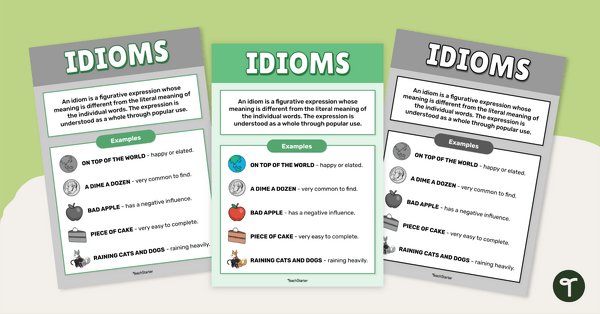
Idioms Poster
Hang this idioms poster in your classroom to give your students a reference for this important piece of figurative language.
- Plus Plan
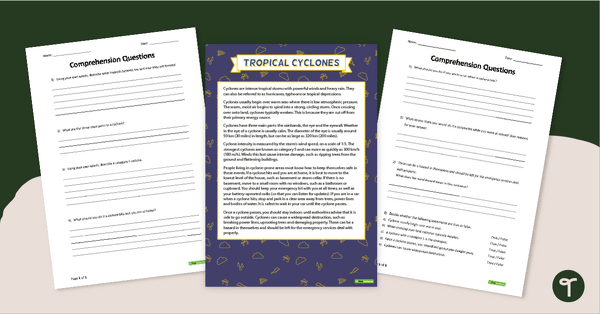
Tropical Cyclone Worksheet - Year 5/6 Comprehension
Use our Tropical Cyclone worksheet pack to teach your students about natural disasters.
- Plus Plan
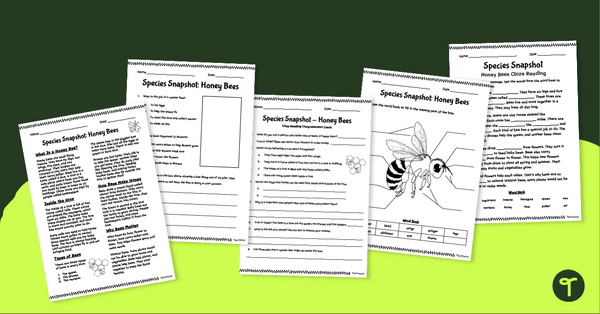
Helpful Honey Bees Worksheet Pack - Year 2 Comprehension
Read and learn about honey bees with a Printable Honey Bees Worksheet Pack for year 2.
- Plus Plan
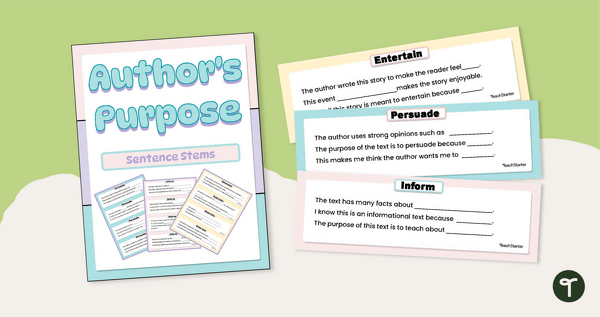
Author's Purpose Sentence Starter Flashcards
Assist students in identifying the author’s purpose with this set of Author’s Purpose Example Sentence Starter flashcards.
- Plus Plan
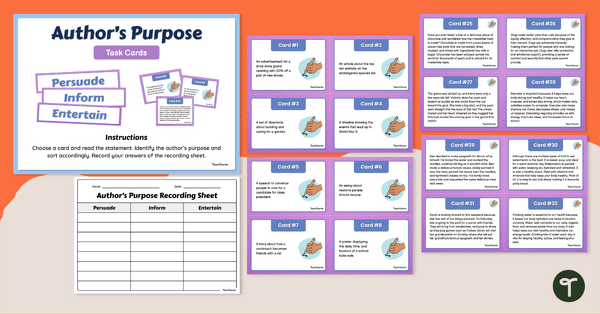
Author’s Purpose Sorting Activity
Use this author’s purpose sort to teach your students the difference between persuasive, informative and narrative writing.
- Plus Plan
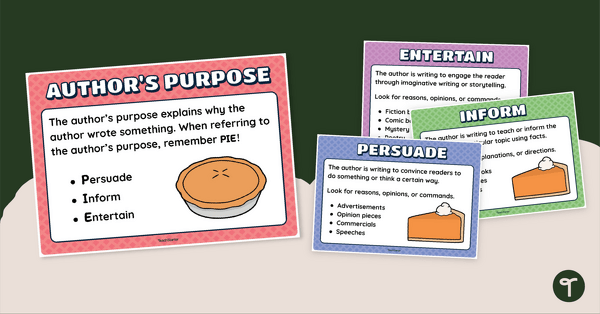
Author's Purpose Pie Poster Set
Display this set of Author’s Purpose Pie posters to help students remember the various reasons authors write.
- Free Plan
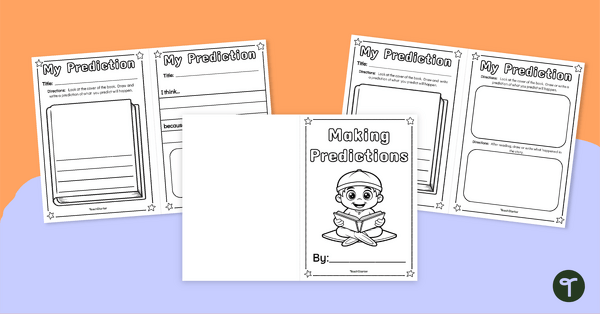
Free Making Predictions When Reading Journal
Encourage deeper thinking with this Making Predictions When Reading Journal template.
- Plus Plan
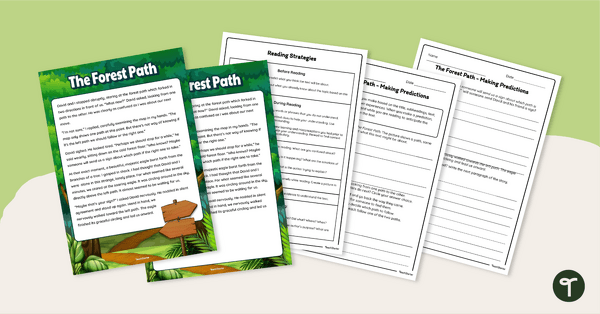
Prediction in Reading Comprehension Task
Help students to engage with prediction during reading with this predictions in reading comprehension task.
- Plus Plan

What’s the Heading? Task Cards
Explore the heading text feature with this set of task cards perfect for literacy groups.
- Plus Plan
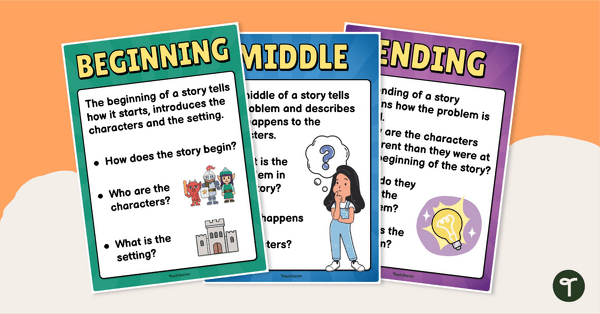
Beginning, Middle and End of Story Poster Set
Remind students of the elements that make up the beginning, middle and end of a story with this set of three posters.
- Plus Plan
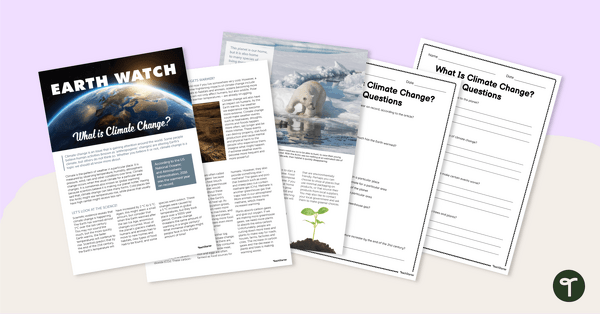
What Is Climate Change? Comprehension Worksheet
Teach your students about the perils of climate change with this comprehensive article with accompanying comprehension questions.
- Plus Plan
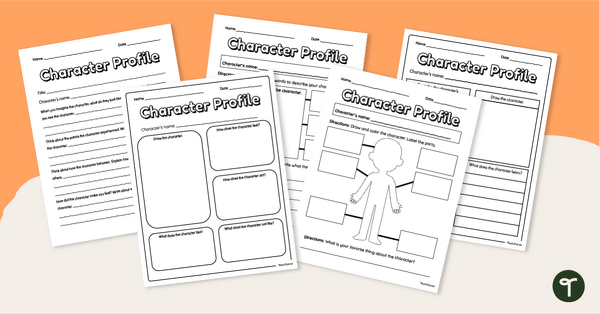
Character Profile Template Pack
Explore the personality, appearance, feelings and actions of a character from a narrative with this printable character profile templates.
- Plus Plan

Bowerbird Comprehension Worksheets
Learn all about the wonderful world of Bowerbirds all while practising comprehension skills.
- Plus Plan
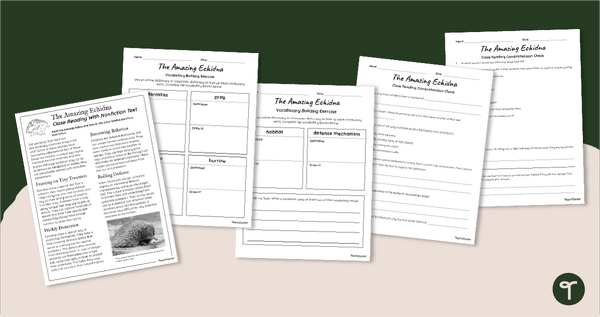
Echidna Adaptations – Reading Worksheet Pack
Discover the adaptations of the echidna with a printable reading passage and comprehension worksheet pack.
- Plus Plan
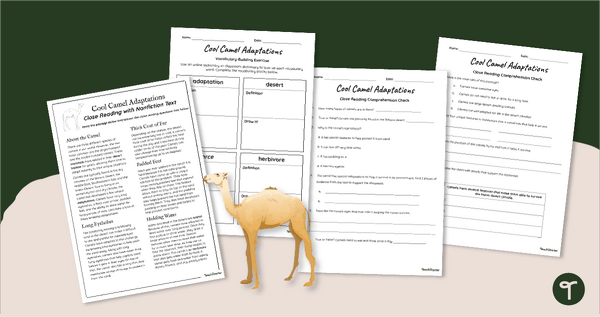
Camel Adaptations - Year Five Reading Comprehension
Learn about the physical and behavioural adaptations of a camel with a set of printable reading comprehension worksheets for Year 5.
- Plus Plan
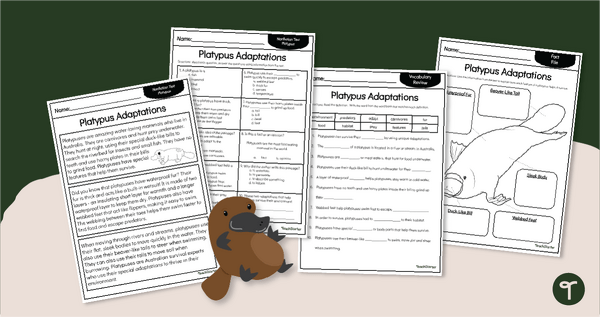
Platypus Adaptations - Reading Passage & Questions
Learn about the physical and behavioural adaptations of the platypus with a set of printable reading comprehension worksheets for Years 3-5.
- Plus Plan
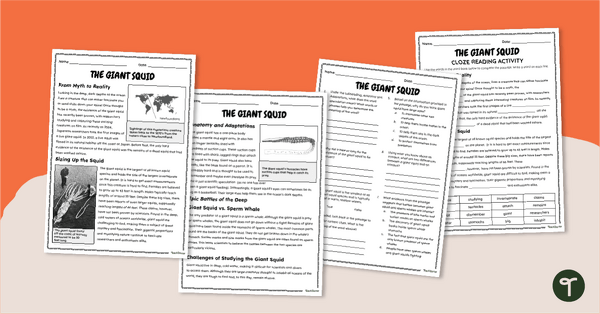
Giant Squid Reading Comprehension Worksheets - Year 5
Read and learn about the features and adaptations of the giant squid with reading comprehension worksheets for years 5 and 6.
- Plus Plan
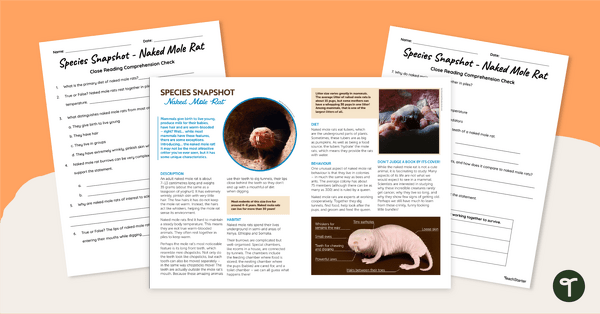
Naked Mole Rat - Reading Comprehension Worksheets
Read and learn facts about the naked mole rat with a printable reading comprehension worksheet pack for year 4 and 5.
- Plus Plan

Poetic Devices Teaching Slides
Explore examples of poetic devices using this comprehensive and age-appropriate slide deck perfect for your poetry writing unit.
- Plus Plan

Story Retelling Strips
Explore a story with your students with this story-retelling cut-and-paste worksheet.
- Plus Plan
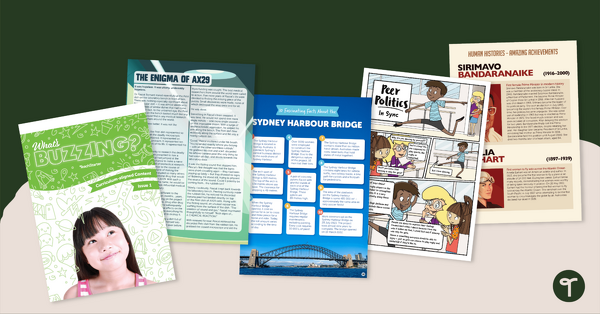
Year 6 Magazine - What's Buzzing? (Issue 1)
A beautifully designed, 26-page reading magazine specifically designed for Year 6 students.
- Plus Plan
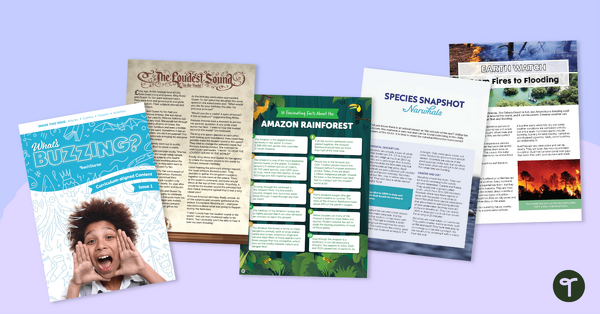
Year 5 Magazine - What's Buzzing? (Issue 1)
A beautifully designed, 24-page reading magazine specifically designed for Year 5 students.
- Plus Plan
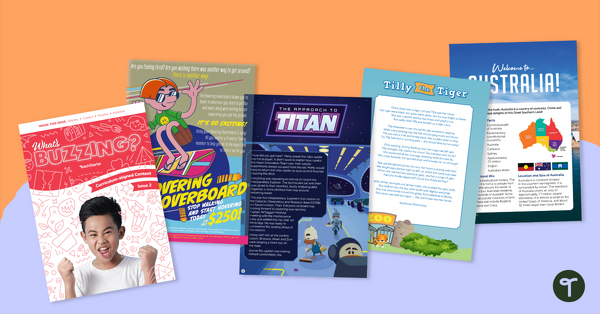
Year 3 Magazine – What’s Buzzing? (Issue 2)
A beautifully designed, 24-page reading magazine specifically designed for Year 3 students.
- Plus Plan
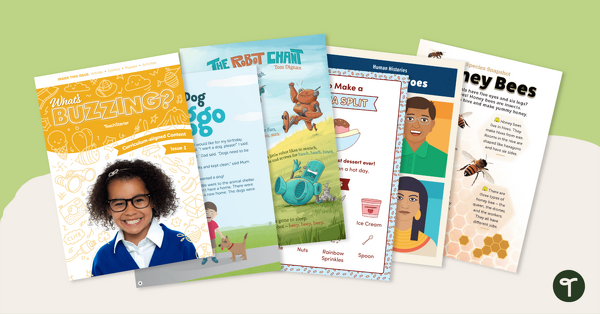
Year 1 Magazine - What's Buzzing? (Issue 1)
A beautifully designed, 24-page reading magazine specifically written for Year 1 students.
- Free Plan
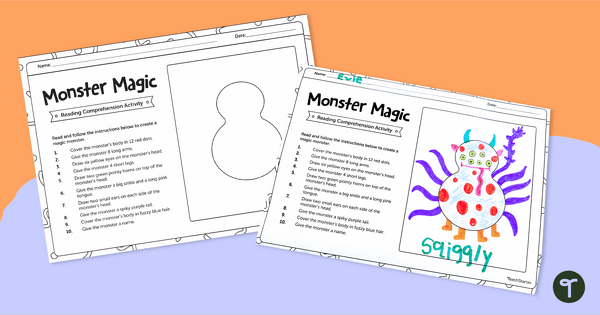
Monster Magic - Reading Comprehension Activity
Read and comprehend a set of instructions to create a magical monster!
- Free Plan
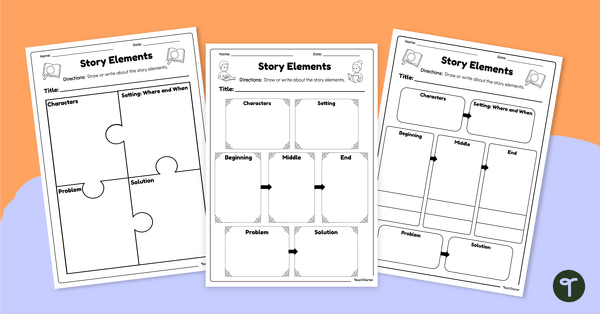
Narrative Elements Graphic Organisers – Portrait
Encourage your students to write and draw about various story elements with this set of differentiated graphic organisers.
- Plus Plan
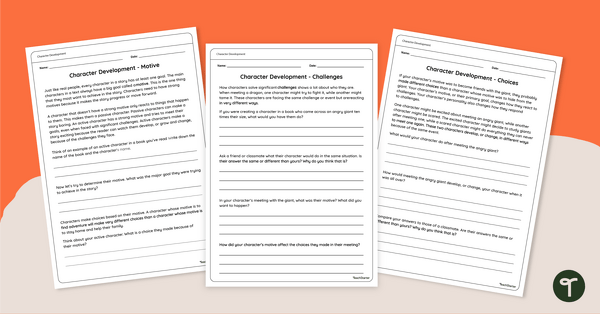
Character Development – Text Analysis Worksheets
Explore character development in narrative writing with this set of three engaging worksheets that help students understand how motivations, challenges and choices shape a character’s growth.
- Plus Plan
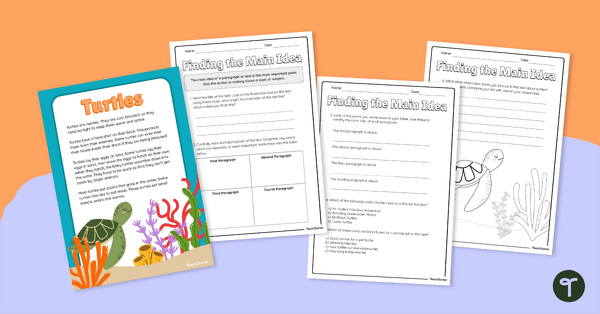
Finding The Main Idea - Comprehension Task (Turtles)
Explore the wonderful world of turtles with this comprehension task focusing on the main idea.
- Plus Plan
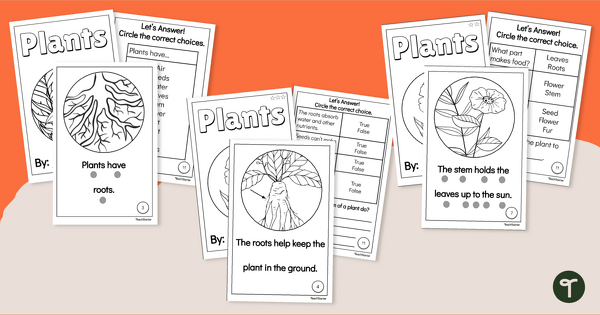
Parts of a Plant - Differentiated Mini Books
Read and learn about the parts of a plant with a set of differentiated Parts of a Plant Books for kids.
- Free Plan
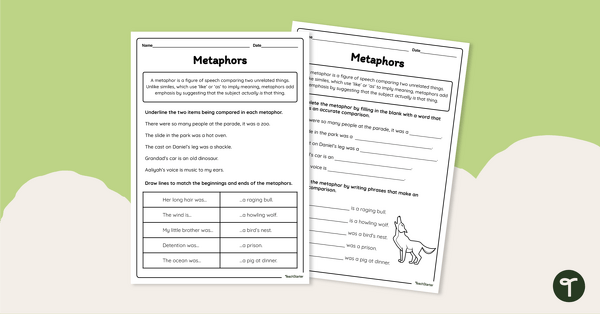
Metaphors Worksheet
Practise identifying and using metaphors with this differentiated metaphors worksheet.
- Plus Plan
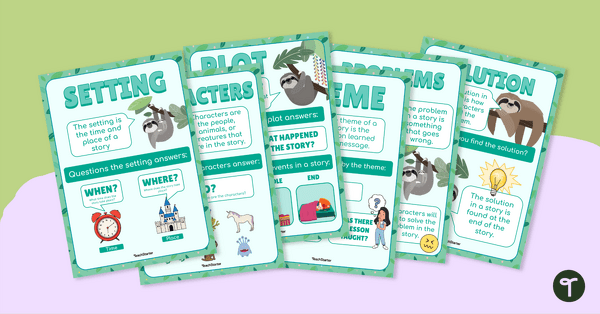
Story Elements Poster Set
Display these cute sloth-themed story elements posters when learning about narrative texts.
- Plus Plan
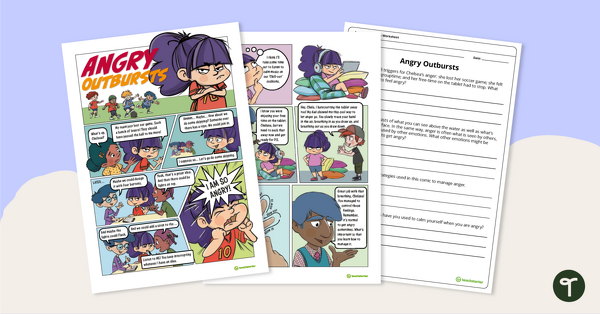
Angry Outbursts – Comprehension Worksheet
Explore emotional awareness and healthy calming strategies with this comic-style comprehension passage and accompanying questions.
- Reading Comprehension Worksheets
- Reading Comprehension Templates
- Reading Comprehension Posters
- Reading Comprehension Teaching Presentations
- Reading Comprehension Games
- Reading Comprehension Flashcards
- Reading Comprehension for Foundation Year
- Reading Comprehension for Year 1
- Reading Comprehension for Year 2
- Reading Comprehension for Year 3
- Reading Comprehension for Year 4
- Reading Comprehension for Year 5
- Reading Comprehension for Year 6
- Reading Comprehension for Year 7